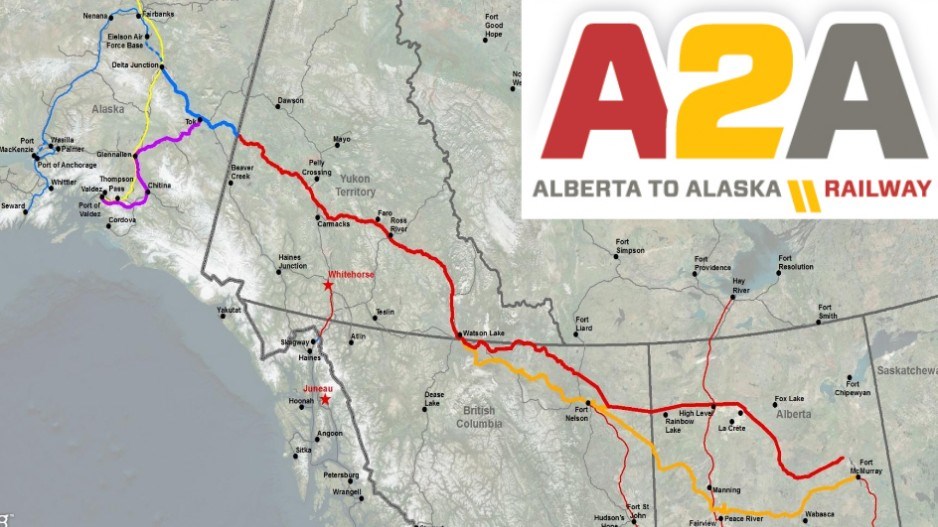The chief of the Fort Nelson First Nation says his people are not opposed to an ambitious oil-by-rail proposal that would see Alberta oil transported to Valdez, Alaska – they’re just not supporting the one being promoted by G7G (Generating for Seven Generations).
It turns out that two different groups are promoting a similar proposal, both of them using the same pre-feasibility study conducted by Calgary’s Van Horne Institute, and the Fort Nelson First Nation supports the newest group promoting the idea, not the group that originally proposed it.
As reported in Business in Vancouver, G7G and the engineering firm AECOM (NYSE:ACM) worked together to put together a proposal to Alberta Energy to fund a feasibility study on a new railway project that would travel from northern Alberta, through northern B.C. and the Yukon to Alaska, where oil could be then transported via the Trans-Alaska Pipeline System (TAPS) to Valdez, Alaska.
It would also transport minerals from mines along that corridor.
Matt Vickers, a partner with G7G, said all First Nations along the proposed corridor gave letters of support for the plan, except Fort Nelson, so they altered the proposed route to largely avoid northern B.C.
But that doesn’t mean Fort Nelson First Nation doesn’t support the idea of a new multi-purpose railway.
Fort Nelson Chief Harrison Dickie told Business in Vancouver that his people support development, and have signed a letter of intent with a new group called Alberta Alaska Rail Development Corp. (A2A).
When Vickers first approached the Fort Nelson First Nation in 2012, their plan lacked detail, Dickie said.
“At the time, the nation said we’re not going throw our blanket letter out there to support something that we don’t have the information on,” Dickie said, adding his people have not heard from G7G since.
But they have heard from A2A, which Dickie said presented a more detailed proposal that his nation can support.
“The biggest difference in approach was that A2A came, transparent, they had info, they had a plan, they seen how our nation would be involved,” Dickie said.
He added: “One of the other selling points was there would be ownership in a fiber optic line.”
But the more detailed plan presented by A2A appears to be, at least in part, based on a feasibility study for which G7G and AECOM secured funding.
Alaska Energy provided $1.8 million for a study, which was conducted by Van Horne Institute in 2015.
One of the members of AECOM that was involved at the time, John Falcetta, has since struck off on his own to form A2A. Falcetta, who is president of A2A, could not be reached for comment.
While the G7G proposal puts the capital cost of its double-tracked 2,440-kilometre oil-by-rail proposal at $27 billion, A2A puts the capital cost at $15 billion, according to a presentation earlier this year to the Fairbanks Economic Development Corp. which also heard from G7G earlier on its proposal.
Jim Dodson, president of the Fairbanks Economic Development Corp., said Alaskans hear a lot of proposals from big project developers, including a proposal to build an undersea transportation system linking Alaska and Russia. He said neither oil-by-rail project seems to be generating much interest or buzz in Alaska.
“It’s not getting any play in Alaska,” he said of both proposals. “We’re not reading about it in the press. It is not a project that is gathering public support.”




